LAFC sets out to create the MLS 3.0 standard

LOS ANGELES — It would be fitting if it was considered the club’s first trophy. There was no competition or tournament associated with it, but the dented metal sign decorating the reception area’s front desk definitely represents a triumph.
Workers discovered the scuffed placard during the early days of clearing and construction on the southeast corner of Exposition Park. It turns out there was no soccer permitted on the grounds near the old Los Angeles Memorial Sports Arena, which was demolished last year. The sign includes a large red slash through a stick-figure player and clear instructions in both English and Spanish underneath. It was intended for everybody. And it’s now among the first things you see as you enter the complex of trailers that comprise the base of operations at this bustling construction site.
Everyone enjoys the irony. Come the spring of 2018, there will be some very high-profile soccer played here along South Figueroa Street. And it will be played by men representing an organization that feels bound by next to no limits, precedent or convention. The Los Angeles Football Club is making its own rules.
“We continually challenge ourselves to be new, next and forward,” LAFC president Tom Penn told SI.com. “Those are our pillars.”
Someday soon, that sign may be displayed as a relic in a more permanent setting. LAFC, which will become Major League Soccer’s 23rd team next year, is on schedule to open its new, 22,000-seat arena in the spring. Banc of California Stadium will be like nothing American pro soccer has seen before. It’ll anchor a $350 million upgrade to Exposition Park that’s being paid for by a star-studded ownership group the likes of which American soccer hasn’t seen before. And it will become part of a sporting and cultural destination unlike any in the country.
LAFC has no coach and only one player under contract. But it’s already begun to forge something of an identity. That’s vital in this teeming metro area of more than 13 million people (and 10 additional major league teams). It’s also especially meaningful in soccer circles, where supporters and communities typically expect a relationship with their chosen club to be more than simply transactional. Fandom frequently represents a piece of your identity, especially in cities with multiple teams. Traditionally, the divisions between local rivals mirror select regional fault lines. They reveal something about the place. How do citizens define themselves? It may matter which side of the river you’re on, or it may hinge on politics, education or socioeconomics. Naturally there’s some blending in this age of luxury suites, social media and increasingly transient populations. But many clubs and fans still celebrate those divisions and cling to the history that forged those identities.
LAFC has no history. But history is informing its decisions and direction, from the tradition established by its intra-city rival to the south to the trajectory of MLS itself. Neither LAFC nor the LA Galaxy represents a particular world view or demographic—at least not yet. If that happens, it’ll be the result of a protracted and organic process. In the meantime, they each hope to appeal to as many fans as possible. They each aim to represent a region that attracts many kinds of people for many different reasons. But for Penn and his LAFC colleagues, there already are distinctions between the two teams. The stadium and its location is one. And where they stand at this particular point in American soccer’s growth is the other.
MLS expansion latest: Fallout from St. Louis's stadium vote defeat, more updates
One of those colleagues is LAFC’s first technical employee, executive VP of soccer operations John Thorrington. The 37-year-old was raised in the South Bay—that would be Galaxy country, if LAFC was willing to cede it—and signed with Manchester United while still in high school. He didn't play for the Red Devils’ first team but did enjoy productive stints with Huddersfield Town and the Chicago Fire, among others. Soccer’s corporate side always appealed, and after retiring, working for the MLS Players Union and meeting LAFC investor (and alumnus) Henry Nguyen through his Northwestern University MBA program, Thorrington moved back close to where he started. The place is familiar. The state of soccer has changed dramatically.
“This league is different now than it was in version 1.0 and 2.0, and it is changing very quickly,” Thorrington told SI.com. “And we’re not just going to be part of the change, we’re going to be driving that change.”
He elaborates: MLS 1.0 was the era of bad uniforms, bad hair, small salaries and fans spread across NFL stadiums. Teams weren’t just trying to get the hang of things, they were hoping to survive. While most ran in place, D.C. United nailed it from the start. Dominant on the field and fueled by the league’s first authentic supporters’ culture off to the bouncing side, D.C. ruled over MLS 1.0. Then came MLS 2.0, which was anchored by the advent of the soccer specific stadium and the Designated Player. StubHub Center (then the Home Depot Center) opened in Carson, California, in 2003. David Beckham arrived in 2007, and the Galaxy reigned.
Thorrington believes the league is entering version 3.0, and while clubs like Toronto FC, the Seattle Sounders and Atlanta United built pieces of the bridge, LAFC intends to set the pace by offering the best of each of those worlds.
2017 MLS Ambition Rankings: Who strives for greatness the most?
“The Galaxy has set a really high bar of success to date, which I think is great. I’d much rather have a high bar to seek. We see that bar of expectation and we raise our level accordingly,” Thorrington said. “But we’re not looking back at MLS 1.0 or 2.0. Our owners would never have done this project if that was the case. This could never have been done five years ago. It never would’ve been financed.”
When we look back on MLS 3.0, Thorrington said, LAFC should be considered the club that “stood on the shoulders of the giants who came before us,” then went on to define and dominate the era.
Said Penn, who made his name as an NBA executive, TV analyst and the founder of the Sports Leadership Institute: “It’s never lineal progress. You hit a tipping point and you get exponential growth, and that’s where we’ve hit with MLS.”
LAFC has had time to survey that evolving landscape, gauge the pace of progress and conceive of a plan to hit the ground running. Its lack of history hasn’t been a hindrance so far. In fact, its owners are pretty excited by the prospect of starting something from scratch.
“It’s been a remarkable exercise of trying to identity our club pillars and what we stood for,” Penn said.
LAFC was awarded its MLS berth back in October 2014.
“We’ve had an unusual opportunity to not have to sweat winning and login games for a while—to not have to operate,” Penn said. “So it’s been about incredible attention to every detail, down to the door handles.”
Penn and Thorrington were speaking inside the main conference room at the LAFC Experience, a downtown office and exhibit nestled in what looks like converted industrial or warehouse space across the 110 Freeway from the Staples Center. The well-appointed brick and wood interior is where a growing cadre of employees sell tickets and sponsorships and where prospective season ticket or suite holders take a virtual tour of the future stadium. The imposing metal handles on the conference room’s glass doors feature the club’s LA logo.
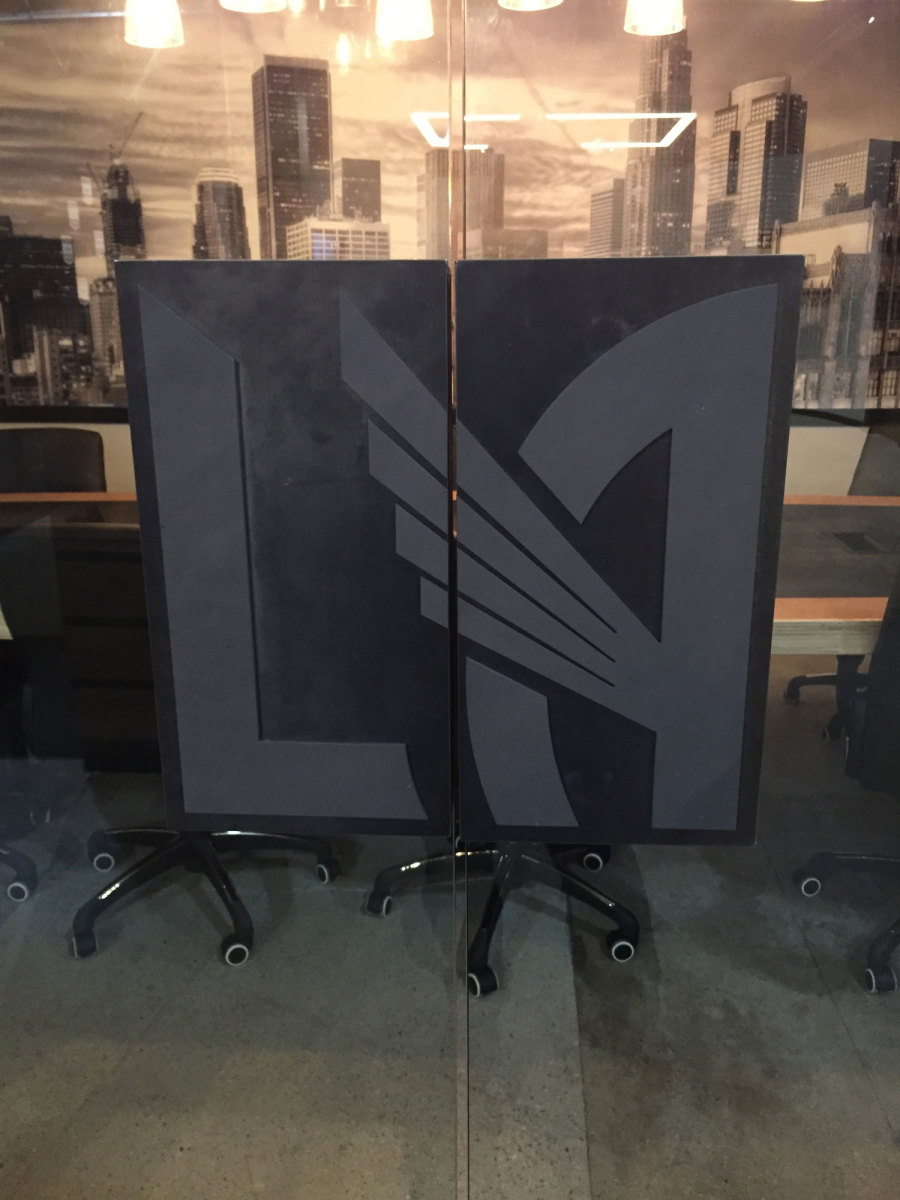
The crest’s wing also is etched onto the large table inside. And it’s over the center’s back door. It’ll be reproduced on the wall of the stadium’s Field Club, where fans can watch the players head out to the pitch, and on the roof—as a skylight—of the complex’s western annex.
They’re just ornamental touches. But they speak to the meticulousness Penn described and the cut-no-corners standard LAFC intends to set. The first MLS stadiums were functional. The New York Red Bulls and Sporting Kansas City added flourishes. Next year, Banc of California Stadium could alter the paradigm. It’s essentially a soccer stadium with NFL luxuries, from the translucent roof and pool deck/nightclub to the literal on-field seating, which Penn adopted from the close confines of an NBA court.
Details weren’t overlooked in the stadium’s cheaper sections, either. The six LAFC supporters groups will have access to a dedicated spot behind the north goal. It’ll have more than 3,200 seats, its own entrance, a standing section, a 34-degree grade and an upper-deck bar with cheaper beer and a view of the field and city skyline. Penn said club executives have been working with supporters since day one. The LAFC Experience hasn’t been restricted to premium customers.
LAFC's Banc of California Stadium renderings
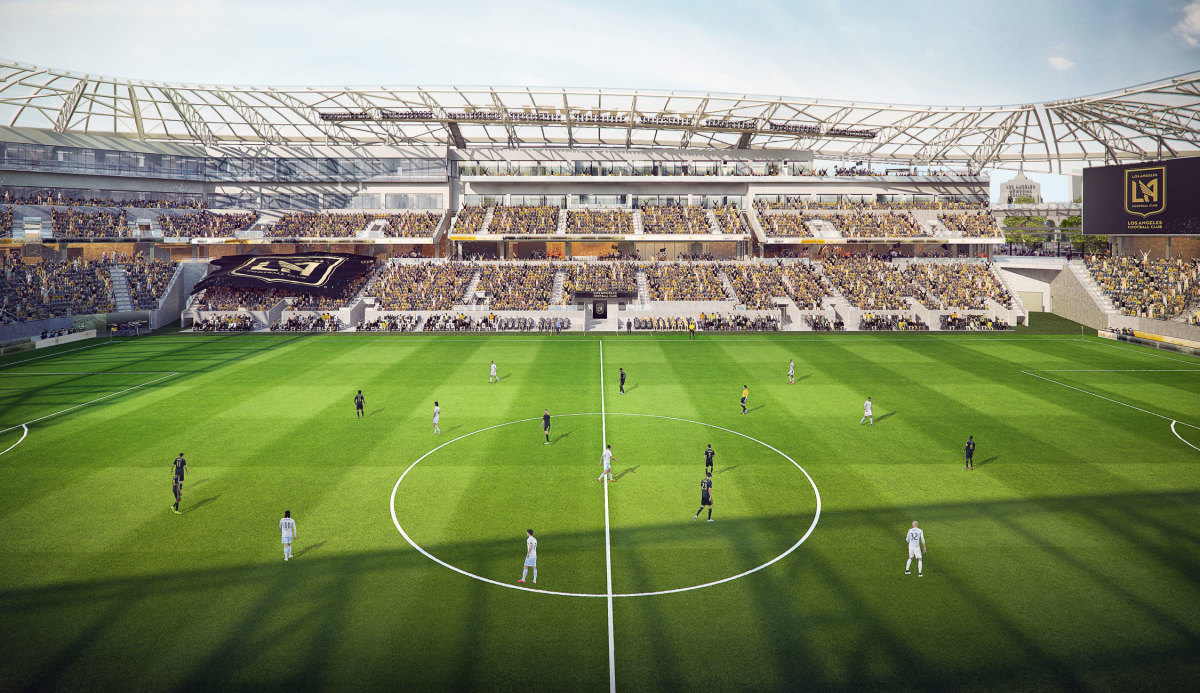
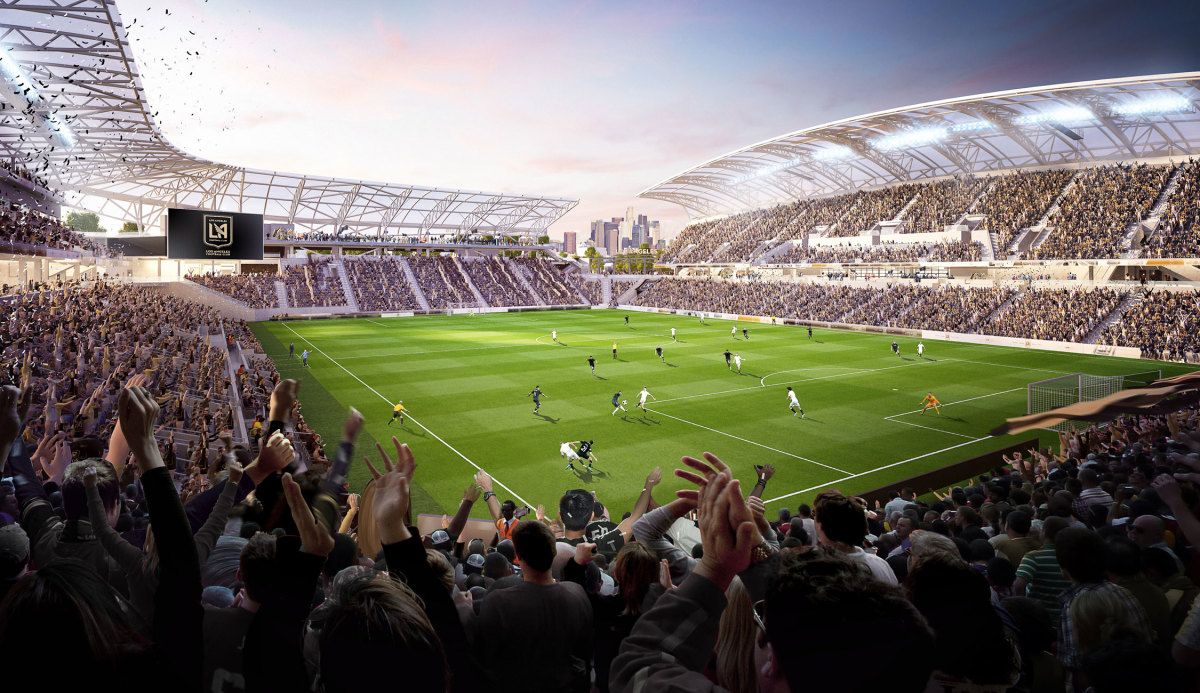
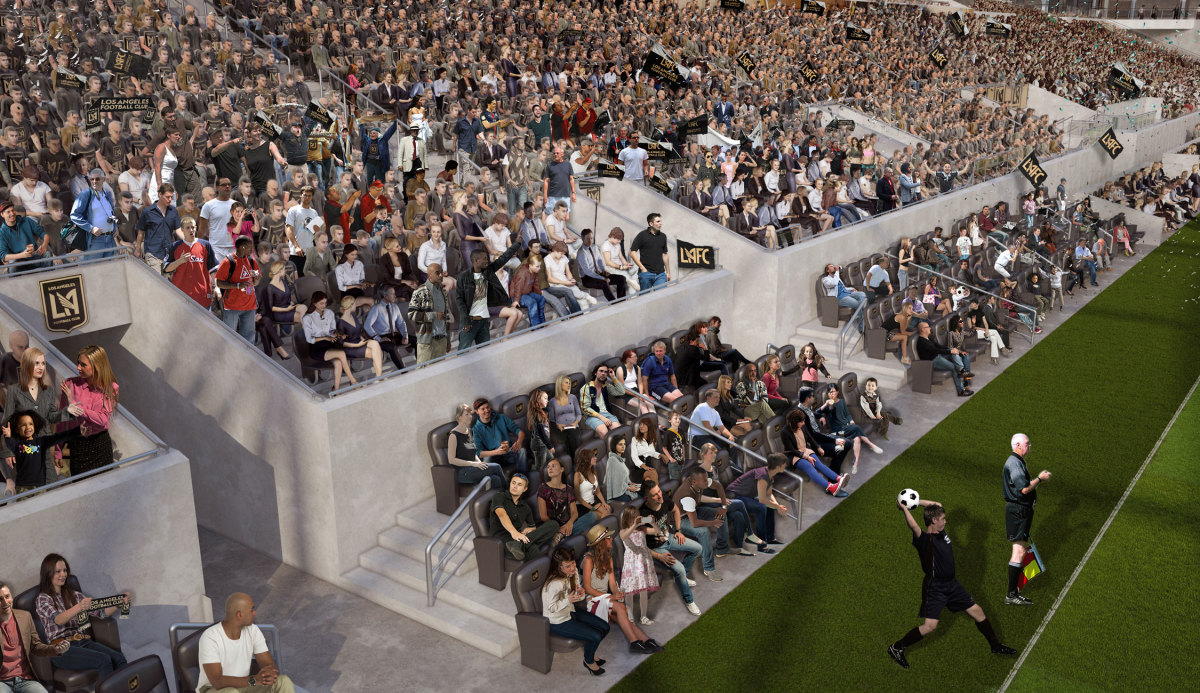
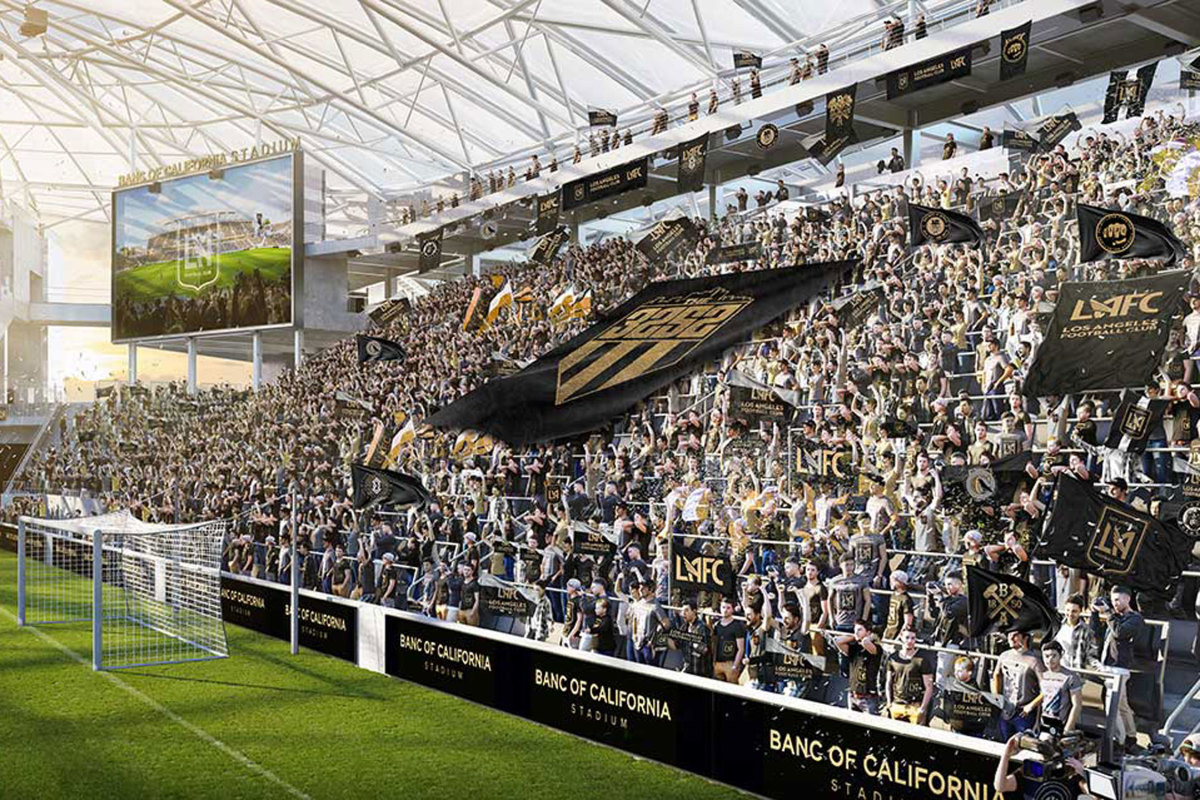
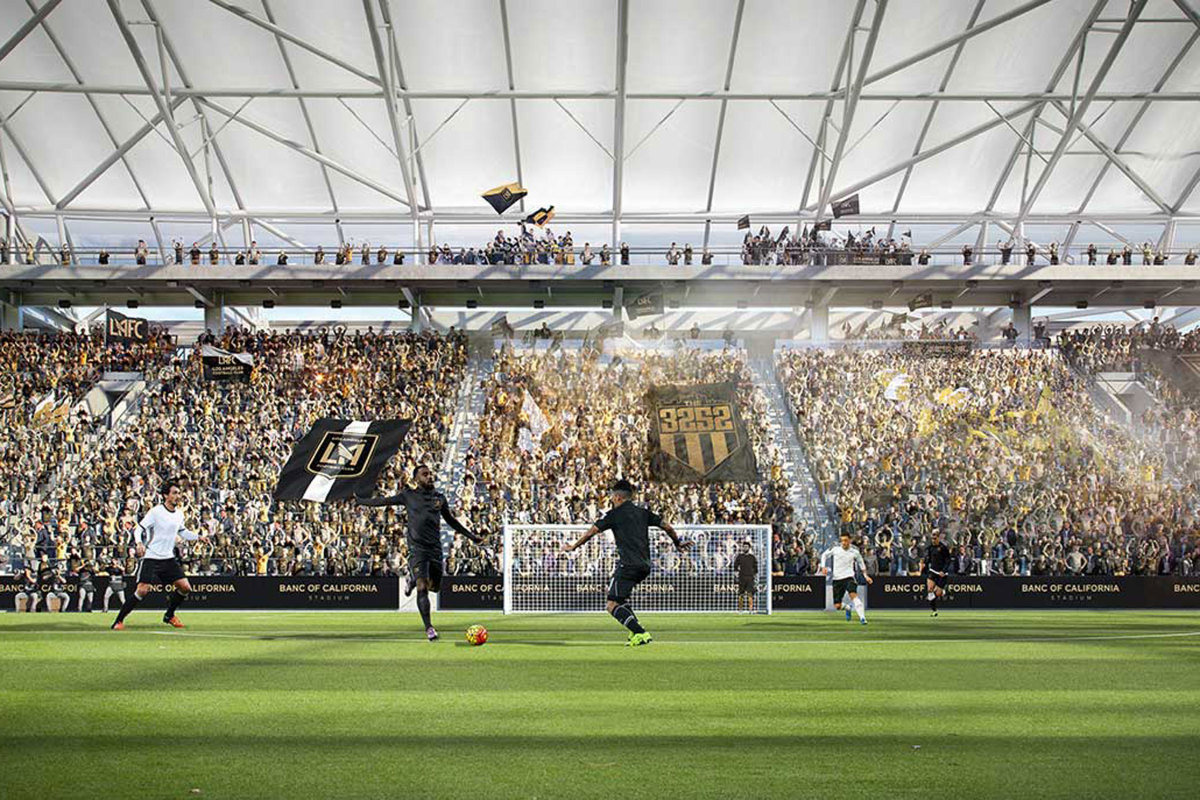
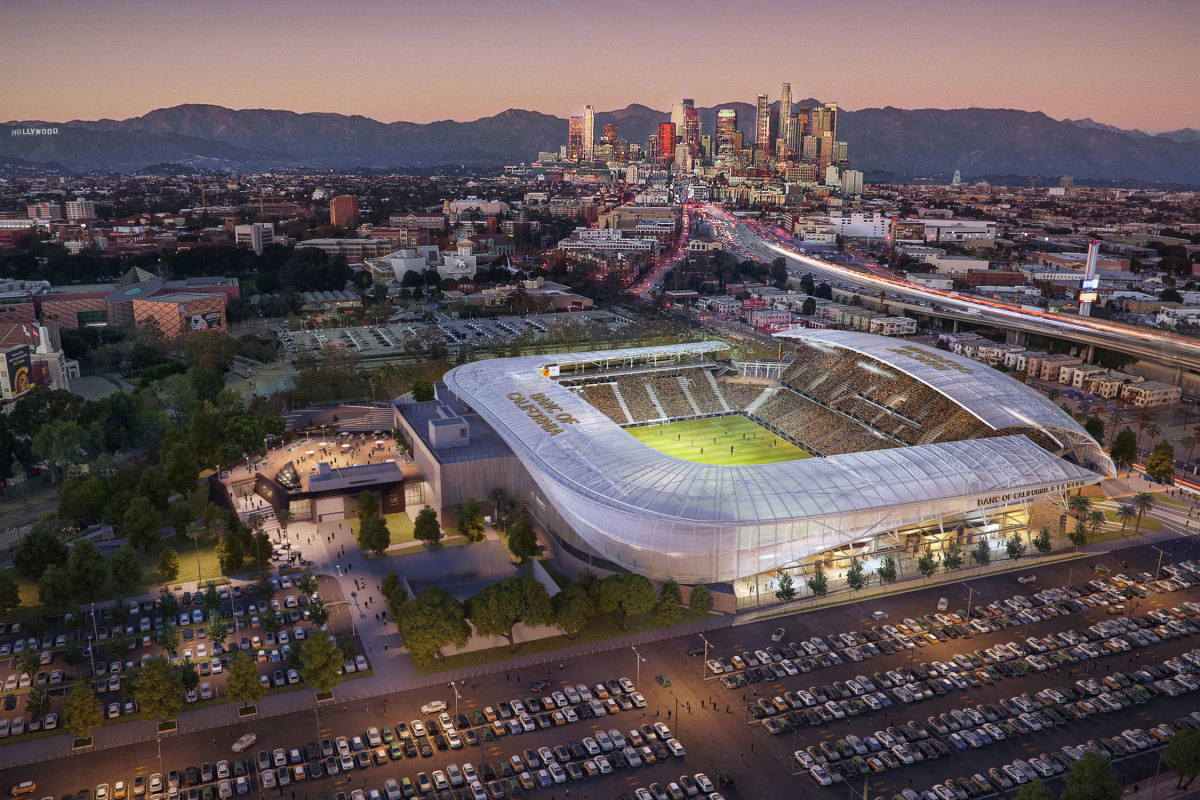
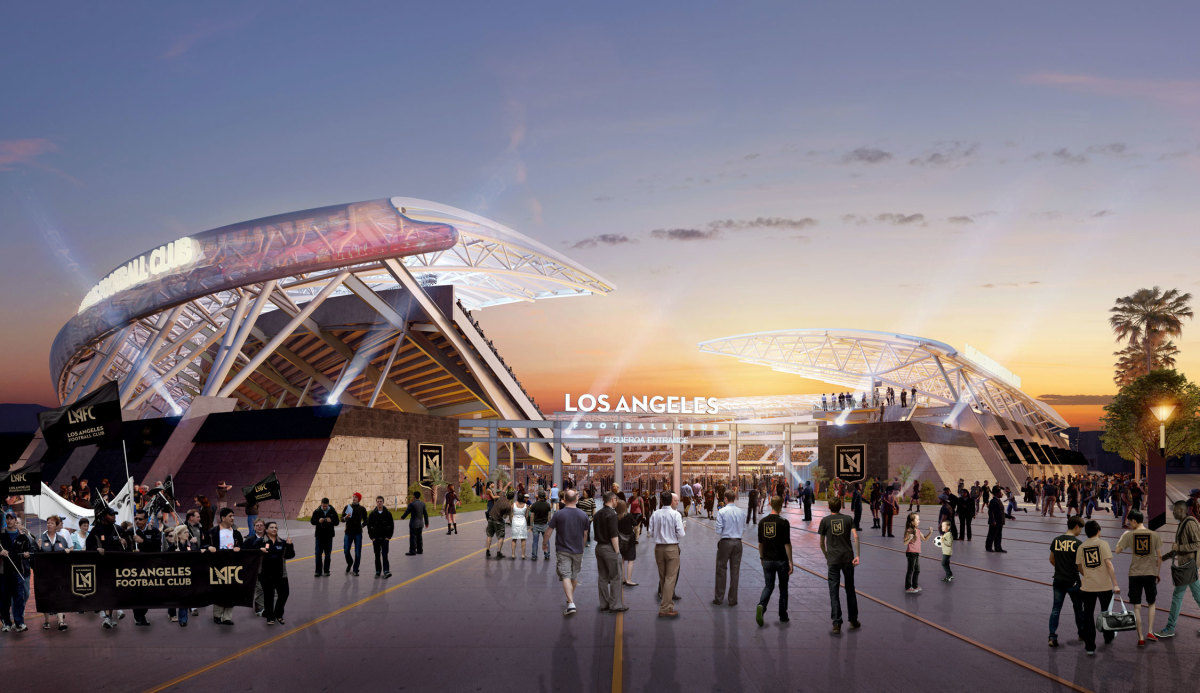
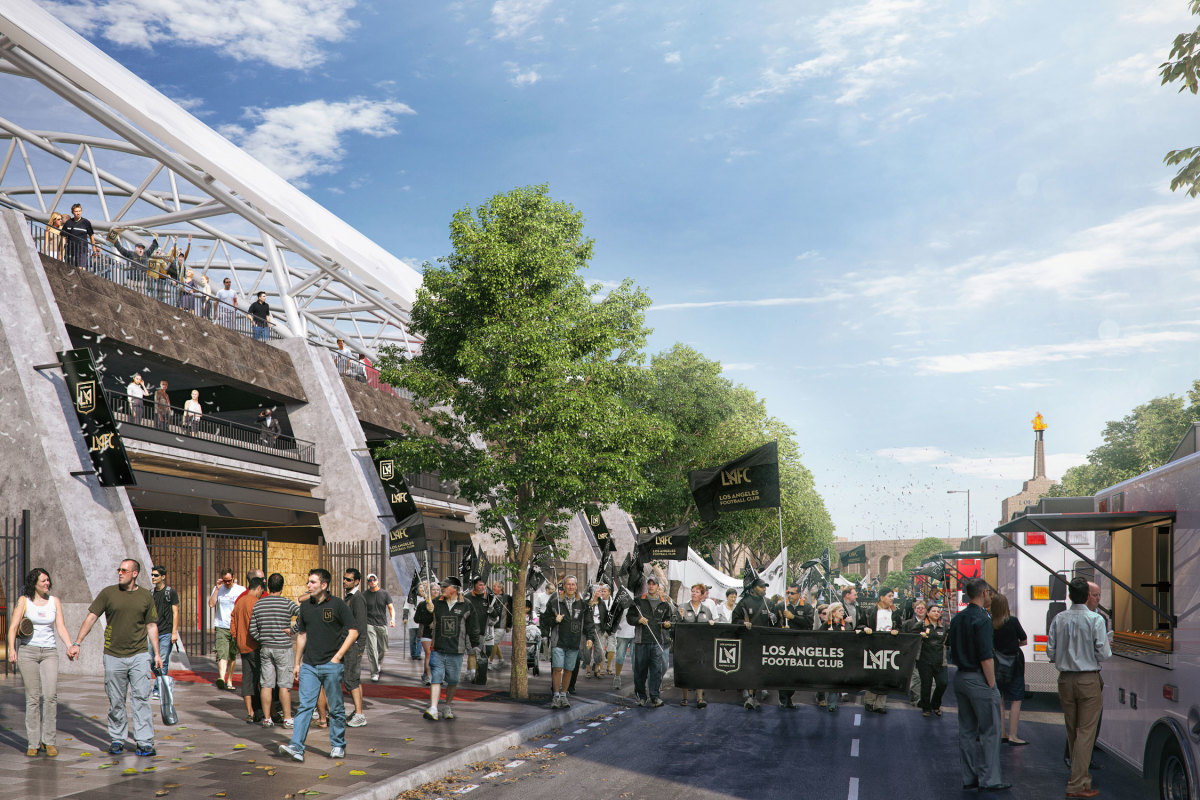
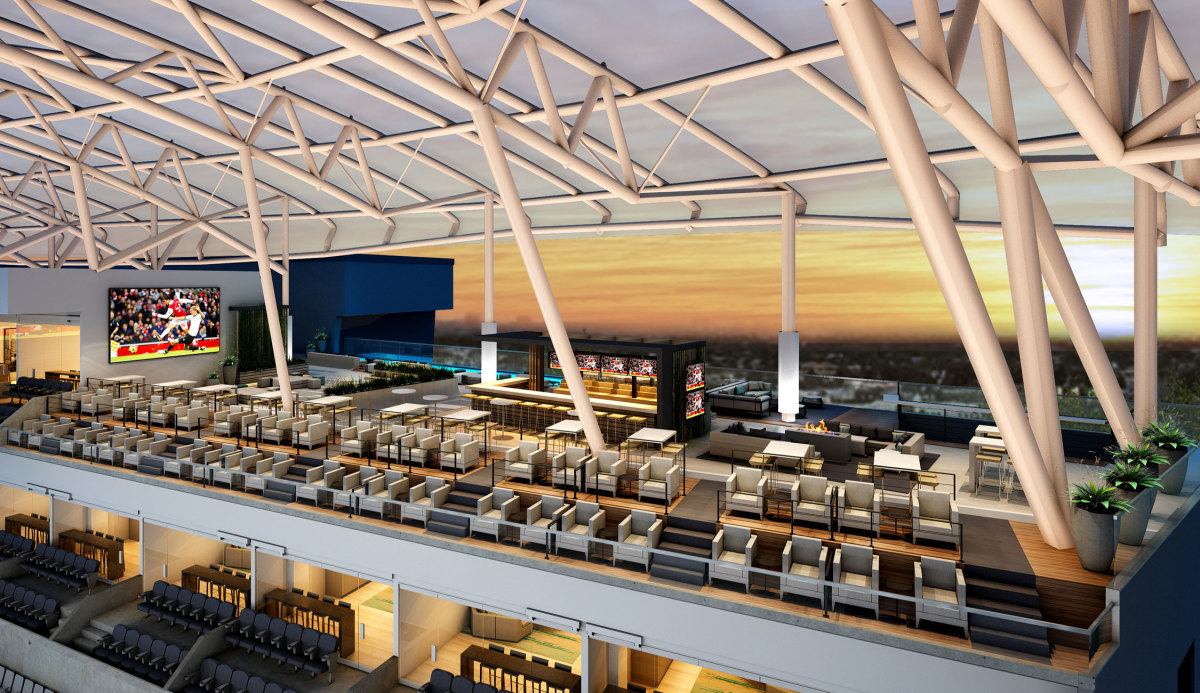
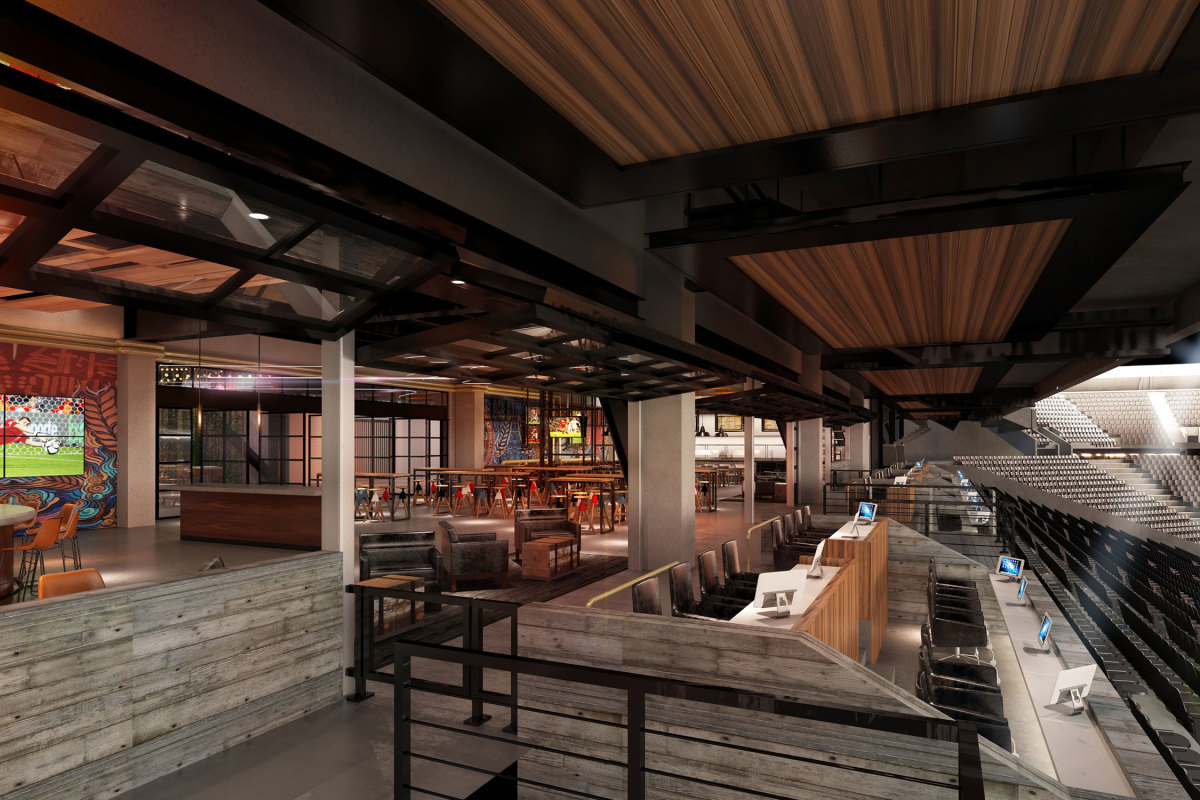
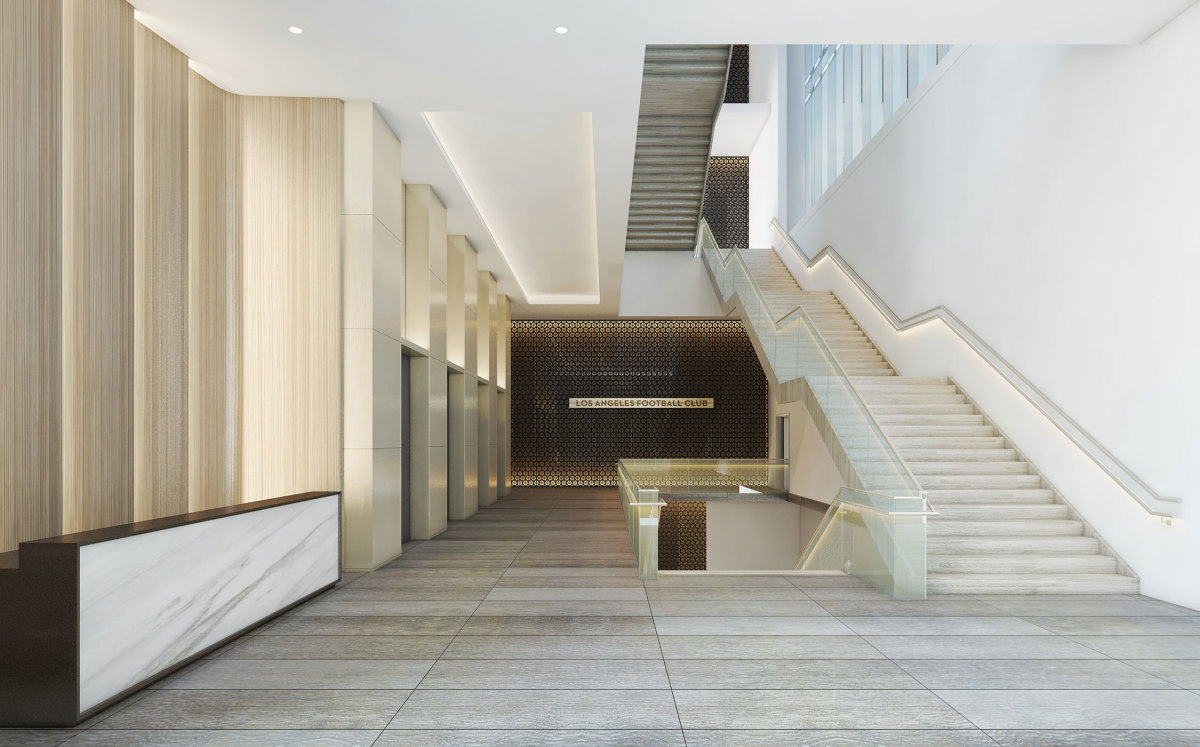
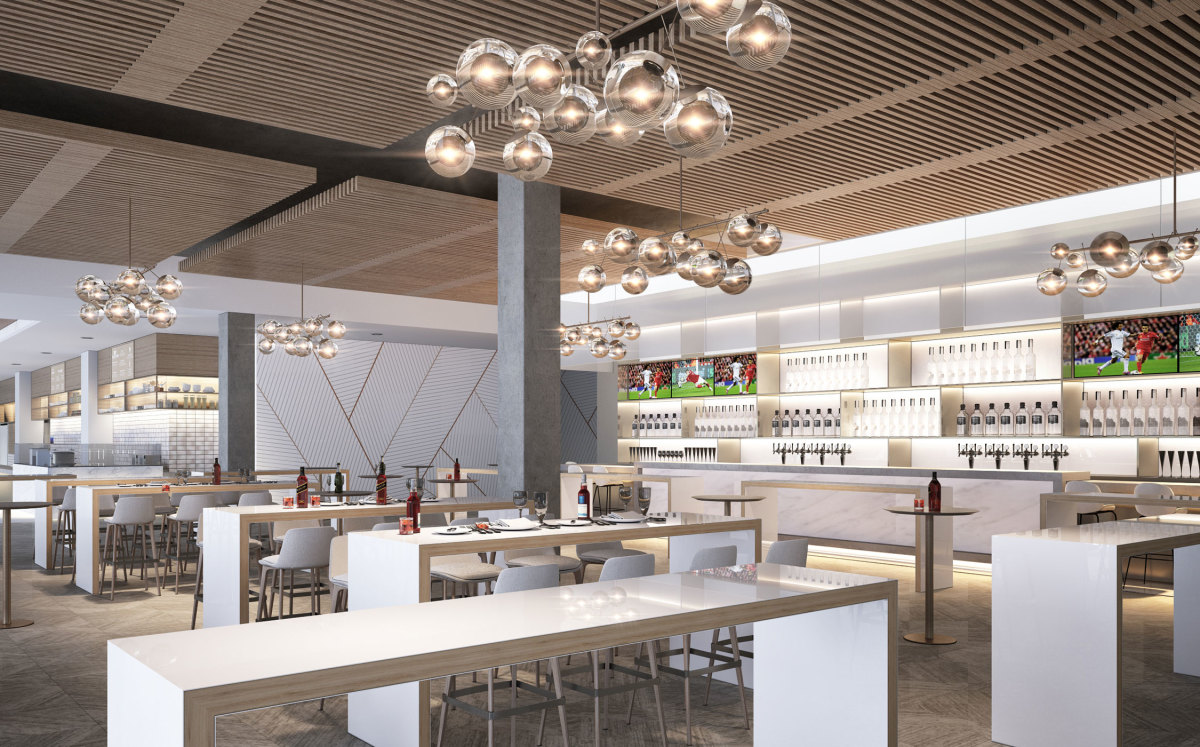
LAFC
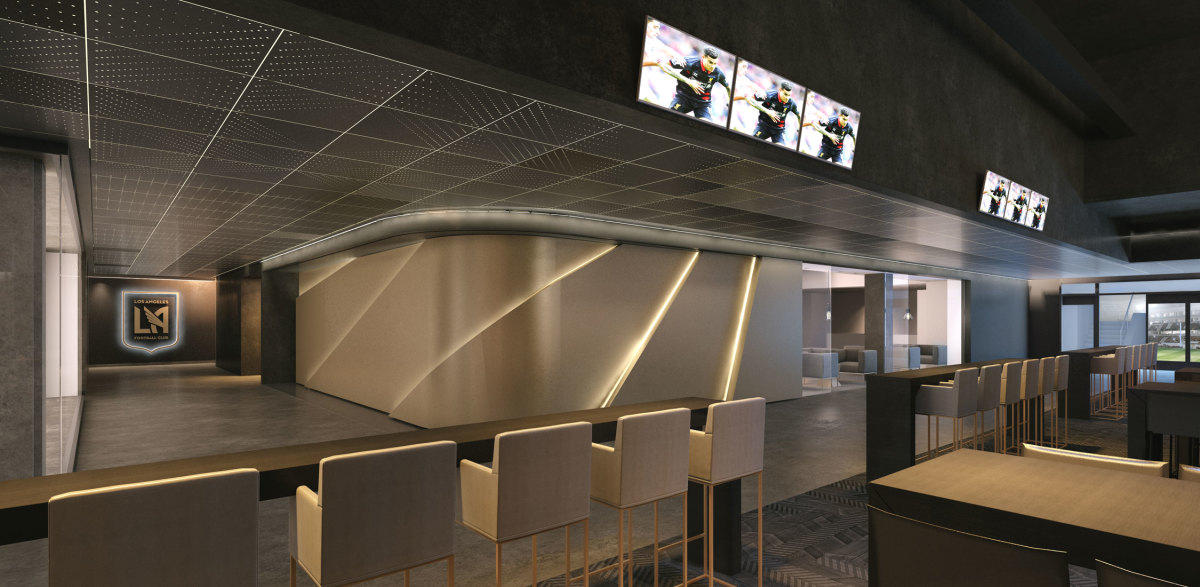
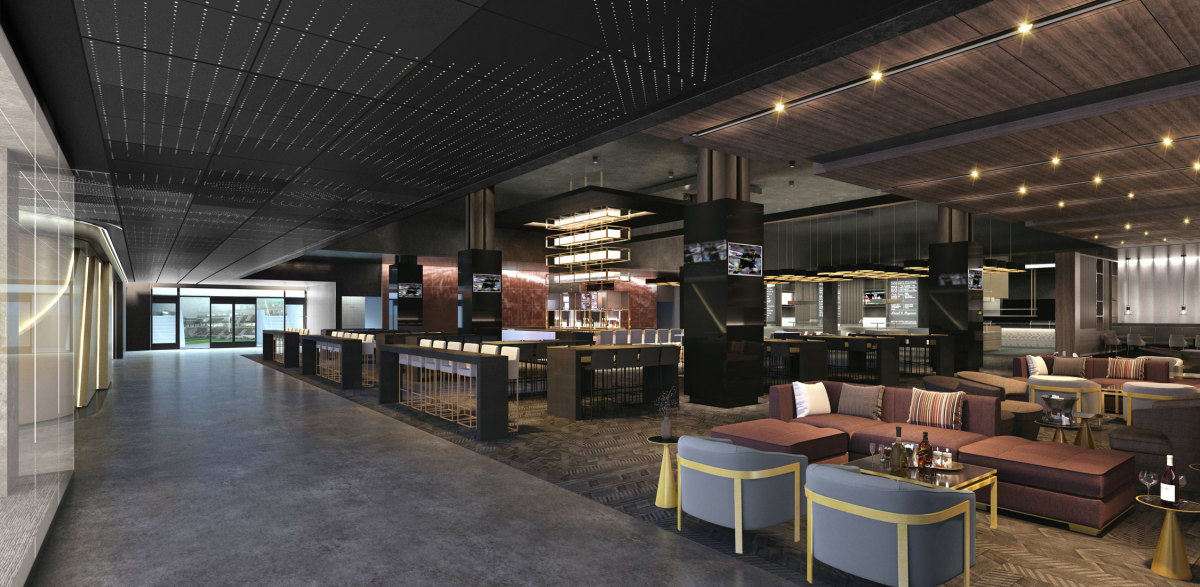
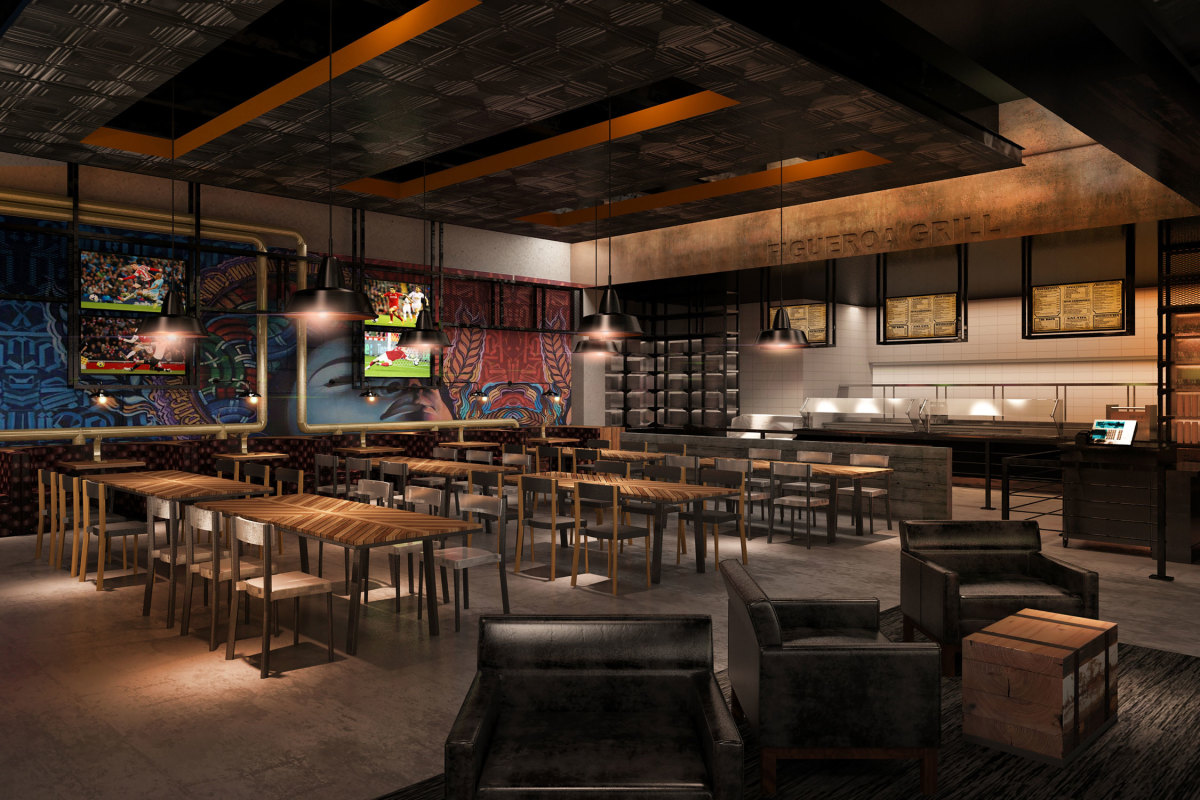
The LAFC crest is black and gold for a reason—they’re two colors that work together together to represent the numerous hues and facets of a region Thorrington and Penn called “a mosaic.” Luxury suite denizens and supporters, English and Spanish, the San Fernando Valley and South Central, Manhattan Beach and the Inland Empire—the fault lines are so numerous and overlapping that there’s no single, simple way to divide L.A. or its teams.
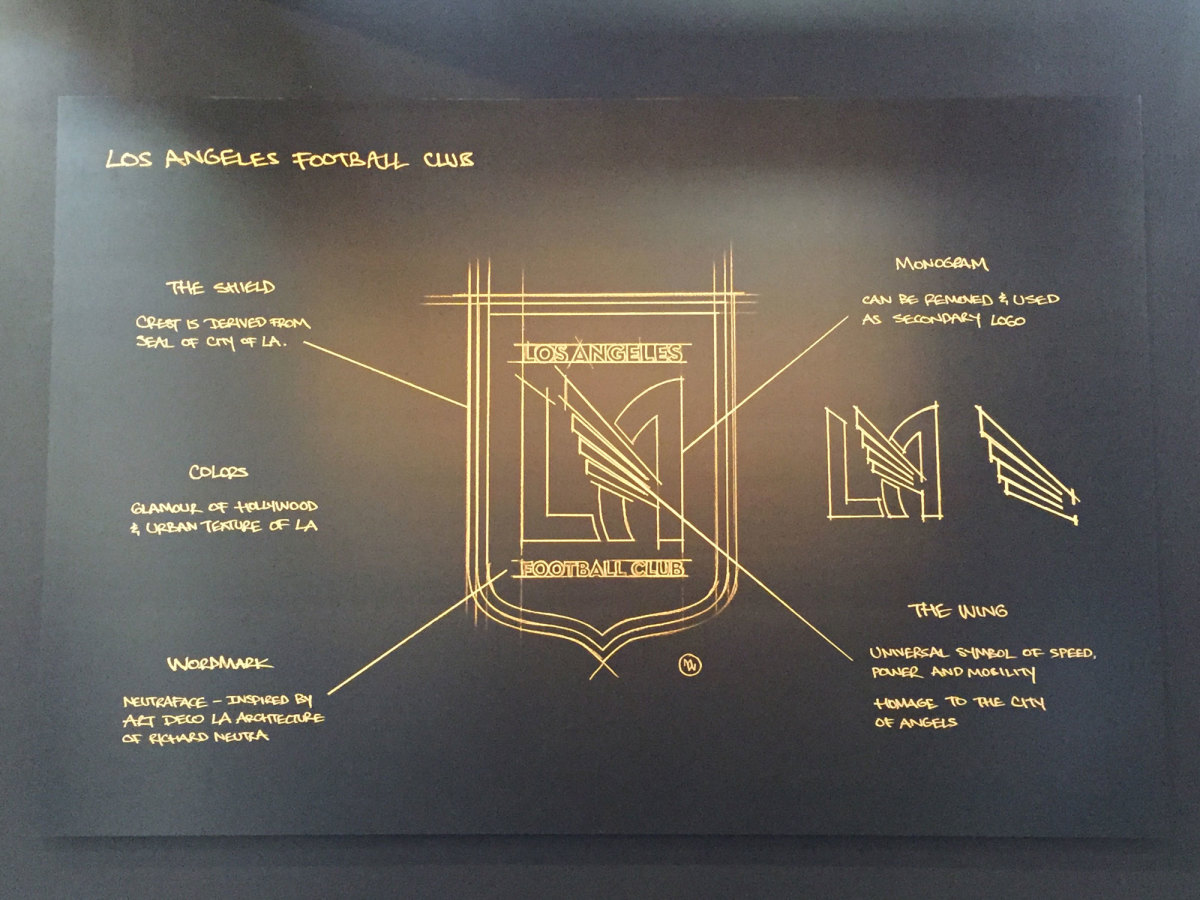
Together, black and gold represent “the success, glamour, and urban texture of Los Angeles,” the club said upon the logo’s release. LAFC wants to reach everyone, and they’ll compete with the Galaxy to do so.
LAFC isn’t ignoring the South Bay, nor are they prioritizing a specific demographic like its failed predecessor, Chivas USA. LAFC has already received commitments for more than 15,000 season tickets from fans called “Originals.” They’re clustered in the northern half of the metro area, but a November map pinpointing their locations reveals the club’s effort to reach further afield.
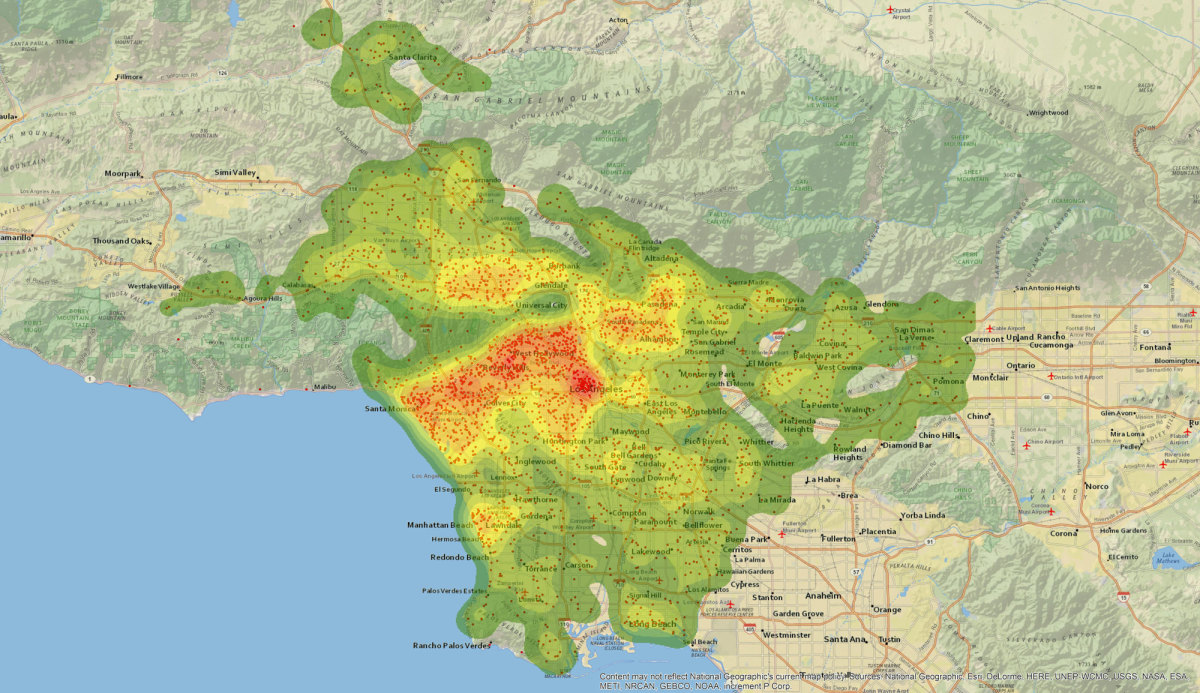
That’s the case culturally as well. LAFC took considerable heat for a 2015 Los Angeles Times story that featured club employees discussing a plan to focus marketing on millennials. Ownership was unhappy with it, to say the least. Prioritizing millennials or singling them out wasn’t their intention, and LAFC has done nothing since to suggest it values one cohort more than another.
Being an Angeleno is a state of mind, Thorrington argued. Hence the black and gold. And LAFC says they want to capture that spirit.
“There’s this image of L.A. that you get if you’re not from L.A. that’s different from someone who lives here,” Thorrington said. “Whether you’ve been here three generations, which is along time, or you’re new to the city, there’s something for everybody and there’s a way to express who you are in this city. You don’t become the city. When I talk about that [external] impression of L.A., where you have this glitz and glamour Hollywood vision, there is a more common story of L.A. where people come here to make it—to work their asses off and get their opportunity. I think that’s the part I’m really excited to balance, the grit with the glamour and the substance with the style.”
LAFC intends to sign big names. It’s been linked with Javier "Chicharito" Hernández, Wayne Rooney and Cesc Fàbregas, among others. But like the Galaxy, the black-and-gold also plan to till the region’s fertile soccer soil. Thorrington recalled his days with the U.S. U-20 national team and how a quick way to divide the squad for a scrimmage was to pit Californians against everyone else. So LAFC’s academy already is up and running. The U-12s just finished fifth at the Generation Adidas Cup. And the first and only senior player under contract is Carlos Alvarez, a 26-year-old midfielder and L.A. native who spent time with Chivas USA and the Colorado Rapids. He’ll spend 2017 on loan to Orange County SC, which has signed on to be LAFC’s USL affiliate.
“We’re not just a logo. We’re an active, living, breathing club,” Penn said.
Added Thorrington: “L.A. is an ever changing city. I think you have an amazing opportunity [to reflect that] in the diversity and the makeup of this on-field product. We’re searching high, far and wide for players all over the world. But you take one look at our academy team-it’s every ethnicity. But they all live here and I think that’s what so powerful about this club, with its location and ownership group and its promise to unite the city through the world’s game. The world is here. You don’t have to go far in a radius outside our stadium, and you get everything.”
That’s going to be true in more ways than one. Banc of California Stadium will be just one attraction at a site that could become a new nexus in a region that doesn’t have much of one. It’ll be tough to find anything in Southern California or North America that will compare to Exposition Park, which sits less than three miles from downtown. It's already the home of L.A.’s Natural History Museum, African American Museum, the EXPO Center pool and fitness complex and the Science Center, which includes the Space Shuttle Endeavour. And coming soon: a $270 million upgrade to the Los Angeles Memorial Coliseum (which will remain home to USC football and could host the 2024 Olympics), a $1 billion museum dedicated to art and memorabilia collected by Star Wars creator George Lucas, and a new Science Center exhibit that allows Endeavour and an external fuel tank to be displayed upright.
In addition, the Banc of California Stadium complex will include retail, restaurant and conference space. Carson can’t compare, and if LAFC’s vision becomes reality the Galaxy will face a formidable foe. No MLS team has been able to build a soccer stadium like this, in a location like this, so quickly. It’s remarkable when one considers the difficulties in New York, Washington and Boston or the locations in Dallas, Chicago and Philadelphia. Perhaps Toronto’s BMO Field, with its recent upgrades, can compare. But that took nearly a decade, and there's no pool.
Penn calls it “the right project at the right time,” which undersells it a bit. When MLS gave the green light to LAFC, commissioner Don Garber called the ownership group led by Nguyen and executive chairman, Mandalay Entertainment Group chief and Los Angeles Dodgers and Golden State Warriors co-owner Peter Guber, a “money group.”
Garber added, “This is a group that will help us achieve our strategy.”
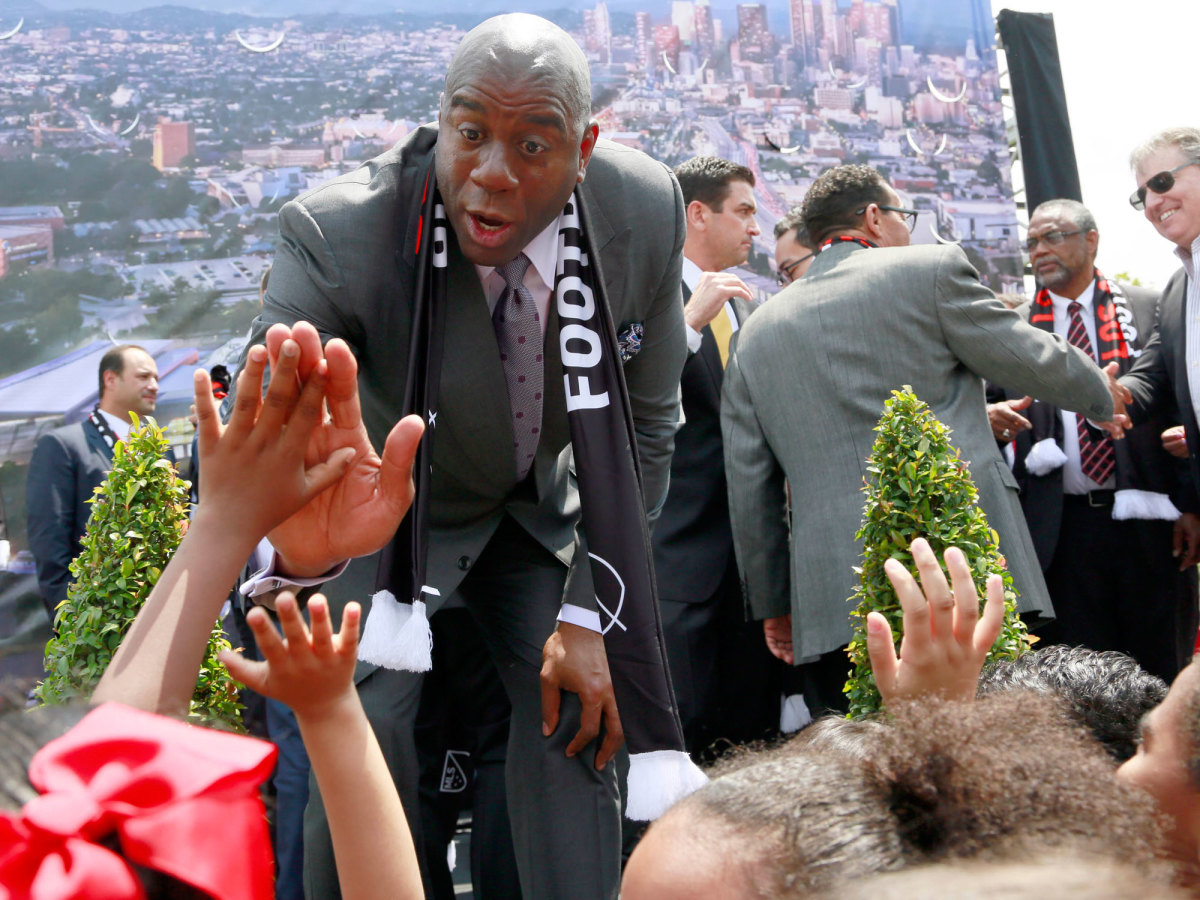
There’s Magic Johnson, Mia Hamm, Will Ferrell (don’t think Thorrington hasn’t pitched Ferrell to prospective players), Riot Games co-founder Brandon Beck, YouTube co-founder Chad Hurley, lead managing owner Larry Berg (an investor in AS Roma and Swansea City), co-managing owner Bennett Rosenthal (another ASR investor) and more. From technology to venture capital, pro sports to entertainment, LAFC owners have direct access to just about anything MLS might desire. And so LAFC represents a unique opportunity and platform for American soccer.
As of now, it's only potential, aspiration and a U-12 team. While the stadium project came together quickly, it’s been a slow start on the PR front. LAFC’s awkward beginning in the Times and on social media has been largely forgotten, but most noise still is coming from the Exposition Park construction site. Most outreach has been of the grassroots or corporate variety, and the club still has no full-time PR or communications staff.
Announcements have become slightly more frequent, however, hinting at bigger things to come. Thorrington has targeted the summer for several significant player acquisitions (and he still needs to hire a head coach). In late January, LAFC hired MLS executive Will Kuntz to be VP of soccer operations and assistant GM. The next day, some 2,000 “Originals” convened at the stadium site to meet with club executives, watch construction and sign their names to the foundation. LAFC’s U-13 and U-14 sides and coaches were unveiled in February (they’ll kick off in the fall) and a 48-team youth soccer tournament was staged in nearby Bell Gardens. On Tuesday, Mexico coach Juan Carlos Osorio stopped by the Experience to preview El Tri’s May friendly against Croatia at the Coliseum. LAFC is the match's “host.”
MLS Power Rankings Week 7: Sporting KC rises ahead of FC Dallas showdown
Decisions and messaging will continue to tweak and adjust the club’s identity. LAFC must deliver on the gameday experience it’s promising. Wins and losses will have an impact, as will the Galaxy’s response. The rivalry will define itself over time, as it should. But make no mistake, LAFC is aiming high and yearns to be inclusive.
The Galaxy started the 2017 season with around 11,400 season ticket holders.
“They’re off the table,” Thorrington said. “But you still have the rest of L.A. It’s not like this is a one-stop town where there’s one bar and everyone goes to that bar.”
The Galaxy will always be first. They’ll always have the legacies of Donovan, Beckham and Keane, and they’ll always have their five MLS Cups. StubHub Center was revolutionary, and a cynic doubts Phil Anschutz and AEG at their peril. But LAFC is launching from a different foundation, one that affords it the opportunity to start with a bang unlike any in the league’s 21-year history–and in a home that should set a new standard. If LAFC indeed comes to symbolize MLS 3.0—if it demonstrates that anything is possible in American soccer and that old limits and conventions are history–that’s the start of an identity right there.
“What’s unique about this club is we’re building something from scratch. It’s just a completely novel thing. But you talk to players, and I think what attracts them is the stadium. We have talked to players that are playing in the nicest stadiums in the world and they see that thing and you see a visceral reaction. They see our location. They see our ownership group … We have everything,” Thorrington said.
“This ambitious project in the heart of the city, I go back to what I said the first time I sat down with Tom,” he continued. “I hope that we get to a place that the 17-year-old me who got an offer to go to Manchester United stays here. That will be an indication of what we’ve done at the first-team level all the way down. That’s really what my hope is for the club.”
